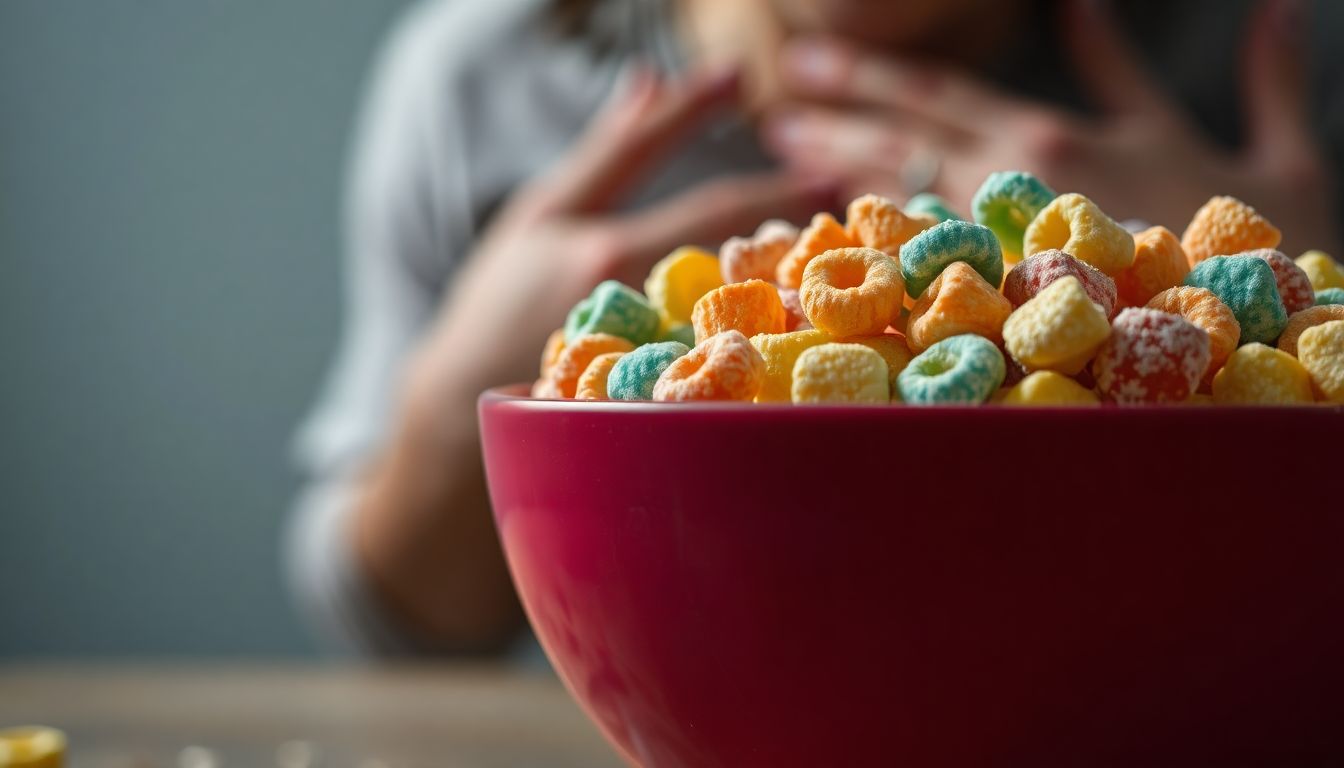
Cereal Brands You Need to Steer Clear Of for Better Health!
High sugar cereals can hide between 10 to 30 grams of sugar per serving, which is staggering. Many breakfast options that are marketed as healthy actually contribute to sugar overload. It’s all too easy to grab a box from the grocery shelf, but it’s crucial to be aware of the hidden sugars and unhealthy additives these cereals often contain.
The Sugar Shock: Unveiling Hidden Sugars
Sugar Content in Popular Brands: A Comparative Analysis
When comparing cereals, the sugar content varies wildly. Brands known for being sugary include:
- Froot Loops: 12g of sugar per serving
- Cinnamon Toast Crunch: 12g of sugar per serving
- Honey Nut Cheerios: 9g of sugar per serving
The data makes it clear: many everyday cereals contain an alarming amount of added sugar.
The Dangers of Added Sugar: Beyond Weight Gain
Consuming high amounts of sugar isn’t just about weight gain. Studies reveal links between excessive sugar intake and chronic diseases such as:
- Heart disease
- Type 2 diabetes
- Fatty liver disease
Deciphering Nutrition Labels: Spotting the Sugar Trap
To avoid falling into the sugar trap, it's essential to read nutrition labels effectively. Key tips include:
- Look at the total sugar per serving.
- Check the ingredient list for terms like "high fructose corn syrup,” “sucrose,” or “fructose."
- Pay attention to serving sizes; a small serving may conceal high sugar amounts.
Artificial Colors and Additives: What’s Lurking in Your Bowl?
The Rainbow Effect: Artificial Colors and Their Impact
Many cereals boast bright colors, but those colors often come from artificial dyes. Research highlights concerns over potential health issues linked to food coloring, including hyperactivity in children and allergic reactions.
Additives to Avoid: A Comprehensive Guide
Some common artificial additives include:
- BHT (Butylated Hydroxytoluene)
- Propylene Glycol
- Artificial sweeteners like aspartame
These additives can lead to adverse health effects ranging from digestive issues to allergic reactions.
Choosing Natural Alternatives: A Healthier Option
Opting for cereals with natural colors, such as those derived from fruits and vegetables, can be a much healthier choice. Brands like Nature's Path or Erewhon focus on using natural ingredients.
The Glycemic Index Factor: Sustained Energy vs. Sugar Crash
Understanding the Glycemic Index (GI)
The glycemic index measures how quickly foods raise blood sugar levels. High GI cereals can spike your blood sugar and lead to crashes, making you feel tired and lethargic shortly after eating.
The Impact of GI on Blood Sugar Levels
Cereals with a high GI can lead to blood sugar spikes, increasing the risk of insulin resistance and ultimately type 2 diabetes. Lower GI options can provide sustained energy throughout the morning.
Choosing Low GI Cereals for Better Health
To select healthier cereals, look for:
- Whole grain oats
- Rolled barley
- Bran cereals
Brands like Bob's Red Mill and All Bran offer options with lower GI scores.
Beyond Sugar: Unhealthy Fats and Empty Calories
The Fat Factor: Hidden Trans Fats and Saturated Fats
Unhealthy fats can also sneak into cereals. Many breakfast options contain harmful trans fats and saturated fats. Popular cereals like Lucky Charms contain added fats that can impact heart health.
Empty Calories: What You’re Not Getting
Many cereals are devoid of essential nutrients. For example, cereals that are high in sugar often lack fiber, vitamins, and minerals, leaving your body craving more.
Choosing Nutrient-Rich Options: Prioritizing Whole Grains
To get more nutrients, prioritize cereals made with whole grains. Brands like Kashi and Quaker Oats focus on whole ingredients that provide fiber, vitamins, and minerals.
Marketing Tactics and Misleading Labels
Deceptive Packaging and Health Claims
Cereal packaging often features health claims that can be misleading. Terms like "whole grain,” “natural,” or “low fat” don’t always mean a product is healthy.
The Importance of Critical Thinking
Skepticism is essential when evaluating cereal marketing. Always double-check nutritional facts and ingredients to determine if the claims actually align with a healthier choice.
Reading Between the Lines: Unmasking Marketing Ploys
To make informed decisions, consider these tips:
- Question buzzwords on the package.
- Look for third-party certifications.
- Educate yourself on common health claims to assess truthfulness.
Conclusion: Making Informed Choices for a Healthier Breakfast
Making the right cereal choices is essential for better health. With high sugar content, artificial additives, and misleading marketing, many options can compromise your well-being. Always read labels carefully and prioritize cereals that contain natural, whole ingredients. Your body will thank you for making informed choices at breakfast!
Comments
Post a Comment